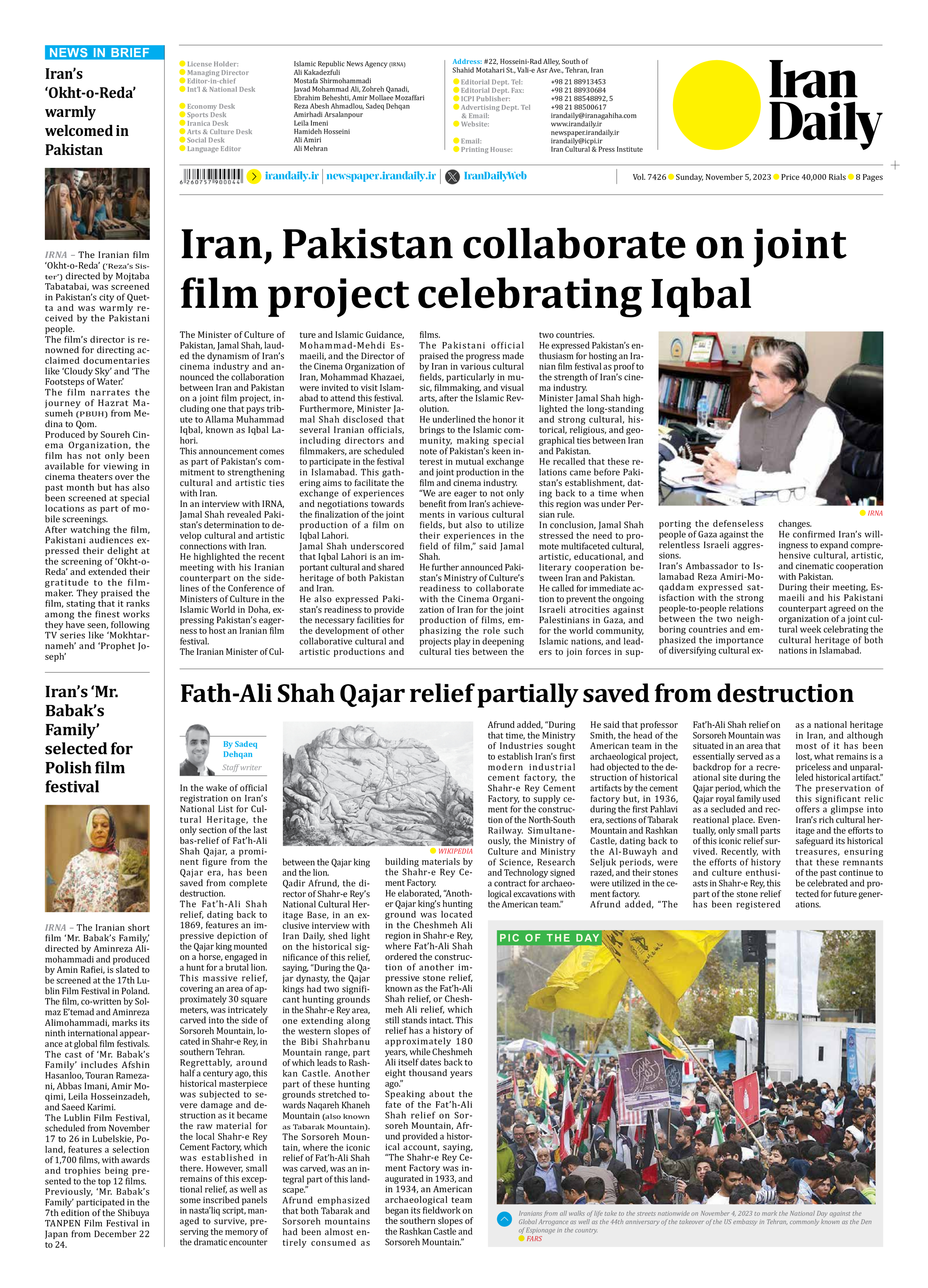
Fath-Ali Shah Qajar relief partially saved from destruction
By Sadeq Dehqan
Staff writer
In the wake of official registration on Iran’s National List for Cultural Heritage, the only section of the last bas-relief of Fat’h-Ali Shah Qajar, a prominent figure from the Qajar era, has been saved from complete destruction.
The Fat’h-Ali Shah relief, dating back to 1869, features an impressive depiction of the Qajar king mounted on a horse, engaged in a hunt for a brutal lion. This massive relief, covering an area of approximately 30 square meters, was intricately carved into the side of Sorsoreh Mountain, located in Shahr-e Rey, in southern Tehran.
Regrettably, around half a century ago, this historical masterpiece was subjected to severe damage and destruction as it became the raw material for the local Shahr-e Rey Cement Factory, which was established in there. However, small remains of this exceptional relief, as well as some inscribed panels in nasta’liq script, managed to survive, preserving the memory of the dramatic encounter between the Qajar king and the lion.
Qadir Afrund, the director of Shahr-e Rey’s National Cultural Heritage Base, in an exclusive interview with Iran Daily, shed light on the historical significance of this relief, saying, “During the Qajar dynasty, the Qajar kings had two significant hunting grounds in the Shahr-e Rey area, one extending along the western slopes of the Bibi Shahrbanu Mountain range, part of which leads to Rashkan Castle. Another part of these hunting grounds stretched towards Naqareh Khaneh Mountain (also known as Tabarak Mountain). The Sorsoreh Mountain, where the iconic relief of Fat’h-Ali Shah was carved, was an integral part of this landscape.”
Afrund emphasized that both Tabarak and Sorsoreh mountains had been almost entirely consumed as building materials by the Shahr-e Rey Cement Factory.
He elaborated, “Another Qajar king’s hunting ground was located in the Cheshmeh Ali region in Shahr-e Rey, where Fat’h-Ali Shah ordered the construction of another impressive stone relief, known as the Fat’h-Ali Shah relief, or Cheshmeh Ali relief, which still stands intact. This relief has a history of approximately 180 years, while Cheshmeh Ali itself dates back to eight thousand years ago.”
Speaking about the fate of the Fat’h-Ali Shah relief on Sorsoreh Mountain, Afrund provided a historical account, saying, “The Shahr-e Rey Cement Factory was inaugurated in 1933, and in 1934, an American archaeological team began its fieldwork on the southern slopes of the Rashkan Castle and Sorsoreh Mountain.”
Afrund added, “During that time, the Ministry of Industries sought to establish Iran’s first modern industrial cement factory, the Shahr-e Rey Cement Factory, to supply cement for the construction of the North-South Railway. Simultaneously, the Ministry of Culture and Ministry of Science, Research and Technology signed a contract for archaeological excavations with the American team.”
He said that professor Smith, the head of the American team in the archaeological project, had objected to the destruction of historical artifacts by the cement factory but, in 1936, during the first Pahlavi era, sections of Tabarak Mountain and Rashkan Castle, dating back to the Al-Buwayh and Seljuk periods, were razed, and their stones were utilized in the cement factory.
Afrund added, “The Fat’h-Ali Shah relief on Sorsoreh Mountain was situated in an area that essentially served as a backdrop for a recreational site during the Qajar period, which the Qajar royal family used as a secluded and recreational place. Eventually, only small parts of this iconic relief survived. Recently, with the efforts of history and culture enthusiasts in Shahr-e Rey, this part of the stone relief has been registered as a national heritage in Iran, and although most of it has been lost, what remains is a priceless and unparalleled historical artifact.”
The preservation of this significant relic offers a glimpse into Iran’s rich cultural heritage and the efforts to safeguard its historical treasures, ensuring that these remnants of the past continue to be celebrated and protected for future generations.







